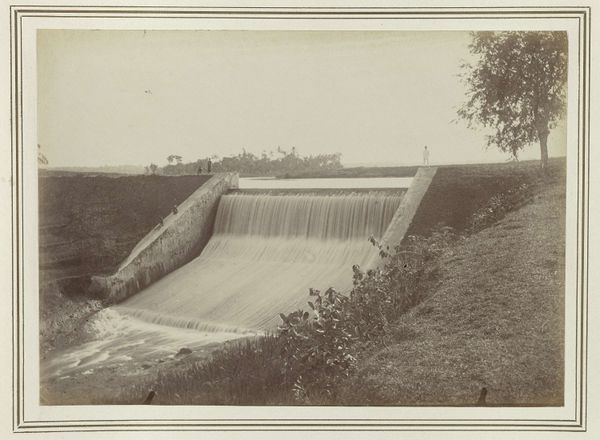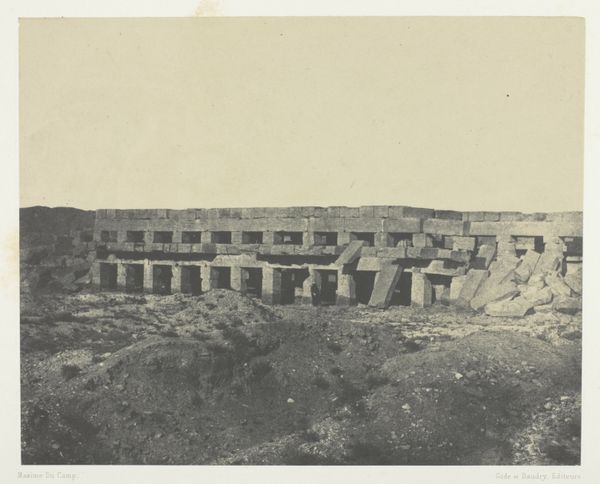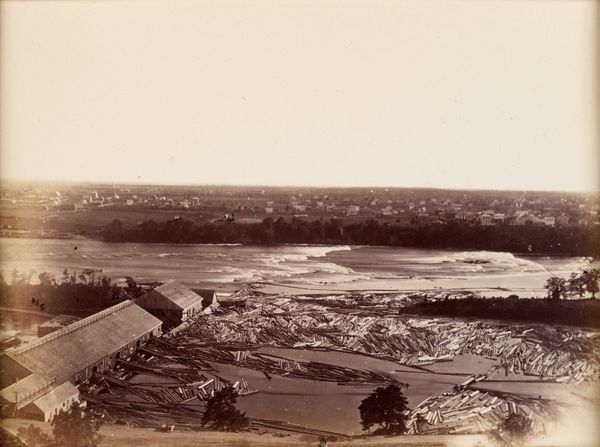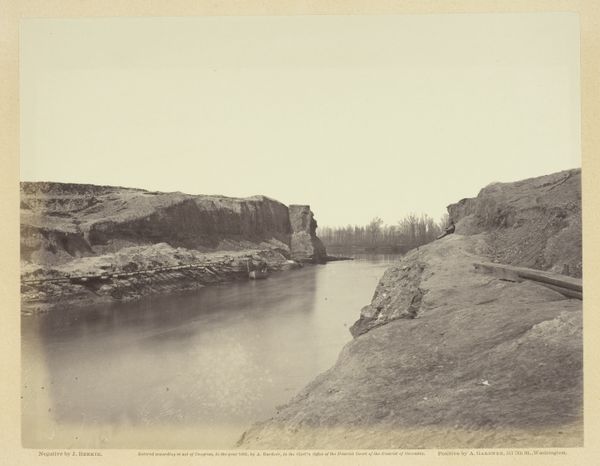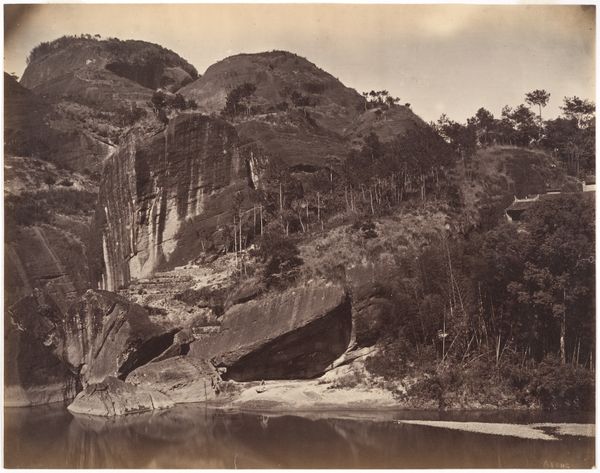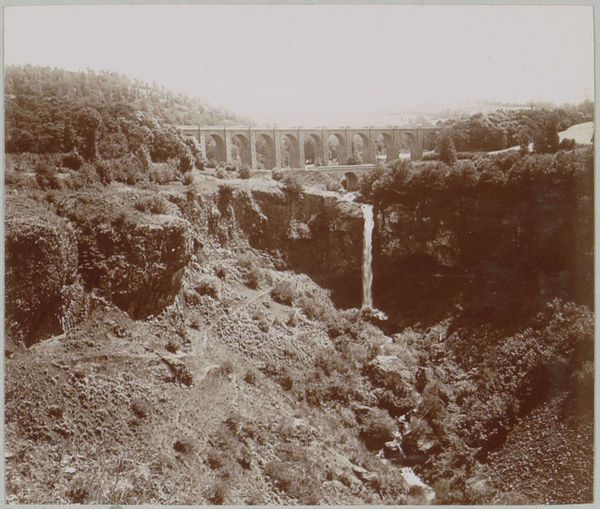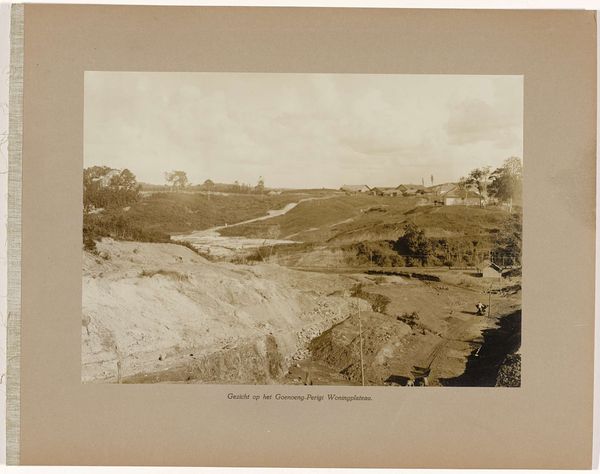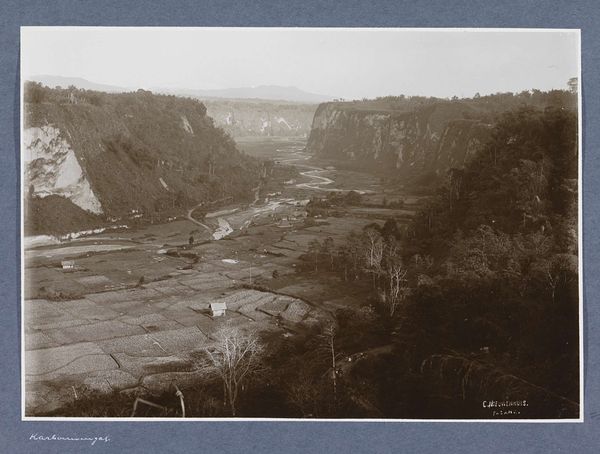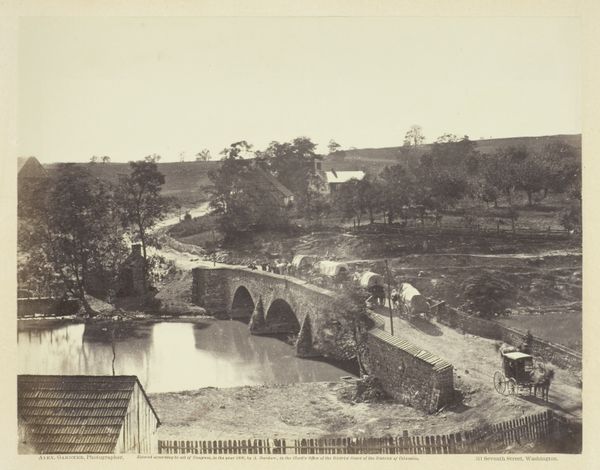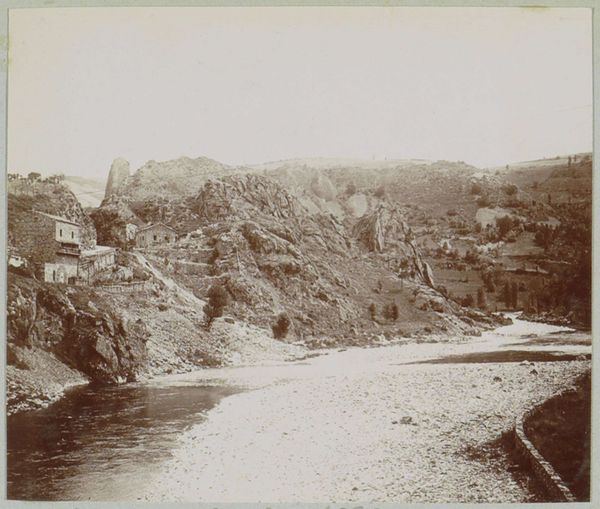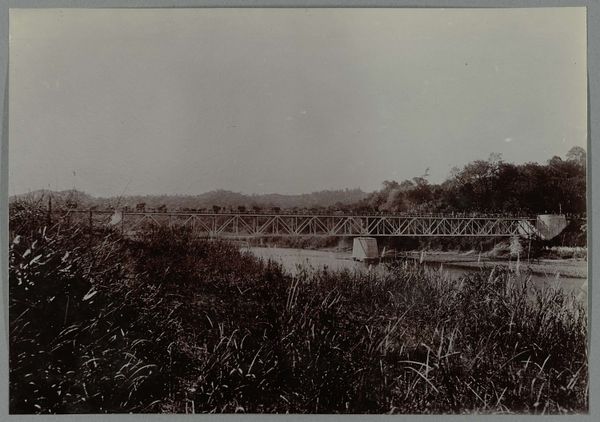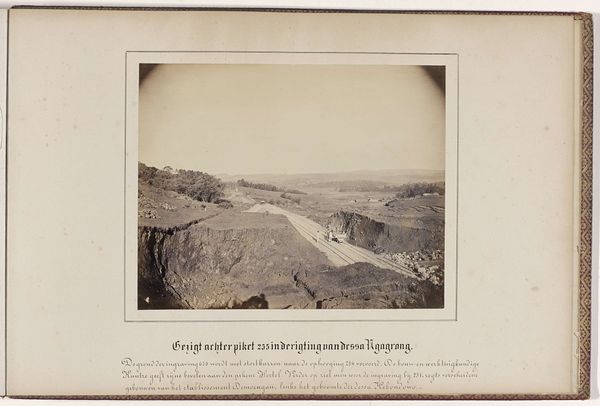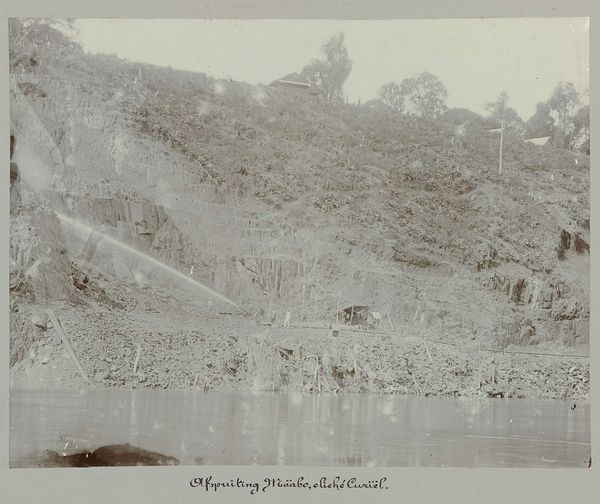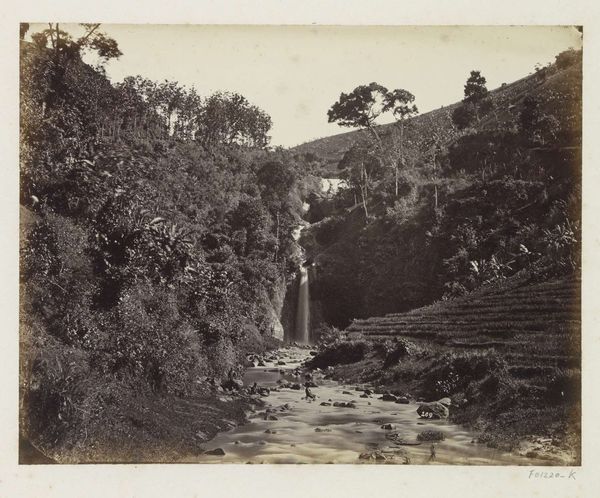
photography, gelatin-silver-print
#
landscape
#
photography
#
historical photography
#
gelatin-silver-print
#
19th century
Dimensions: height 150 mm, width 210 mm
Copyright: Rijks Museum: Open Domain
Editor: Here we have Kassian Céphas’ gelatin silver print "Stuwdam en waterval" or "Dam and Waterfall," from 1886. The image has a somewhat desaturated quality to it, fitting for a nineteenth-century photograph, I suppose. What stands out to me is the stark contrast between the ordered, man-made dam and the chaotic, rocky riverbed below. What do you see in this piece? Curator: The image offers us a potent intersection of technology, nature, and colonialism in Java at the end of the 19th century. These infrastructural projects, like this dam, were not simply neutral acts of progress. Dams re-engineer the landscape to serve colonial economic interests. How might the forced labor used in the construction of this dam, or the displacement of communities to build it, change our reading of it as just a landscape photograph? Editor: That’s an interesting point. I was focused on the visual composition, the way the artist framed the scene, but I didn’t consider the implications of the dam itself. Were these large-scale engineering projects common in Java at this time? Curator: Yes, and that's key. They reflect a broader pattern of resource extraction and control enacted through physical modification of the environment. The “waterfall” isn’t natural; it’s a consequence of human intervention. I wonder, what narratives are silenced or obscured by the seemingly objective viewpoint of the camera? Editor: It makes you wonder who benefited from this dam. The people who built it, or a foreign power looking to exploit resources? So, beyond the aesthetic qualities, this photograph functions as a document of power dynamics at play during the colonial era. Curator: Precisely. It encourages us to question whose stories are being told and whose are being left out of the frame. Editor: That’s a perspective I hadn't fully appreciated. Thanks for broadening my understanding of this photograph and its historical implications. Curator: My pleasure. Hopefully we have offered our listeners a starting point to interrogate similar historical documents with a critical eye.
Comments
No comments
Be the first to comment and join the conversation on the ultimate creative platform.
